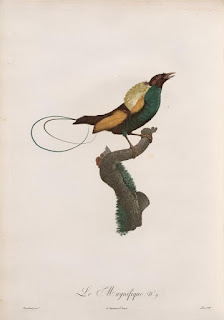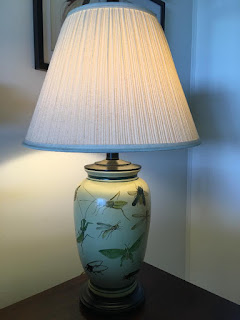For the first time in its ninety-three year award history, the Academy of Motion Picture Arts and Sciences has nominated two women in the Best Director category. Chloé Zhao has been nominated for Nomadland and Emerald Fennell for Promising Young Woman. They place in the category alongside Lee Isaac Chung (Minari), Thomas Vinterburg (Another Round) and David Fincher (Mank). Zhao is also the first woman of Asian descent to ever pick up the nomination.
 |
| Oscar nominees Chloé Zhao and Emerald Fennell |
Prior to this year, only five women in the history of the Awards have ever been nominated for Best Director. They are Lina Wertmüller (1976) for Seven Beauties; Jane Campion (1993) for The Piano, Sofia Coppola (2003) for Lost in Translation, Kathryn Bigelow (2009) for The Hurt Locker, and Greta Gerwig (2017) for Lady Bird.
Zhao has already picked up the Golden Globe for Best Director this year. It was three years ago, in 2018, when Natalie Portman presented the category at that awards show by declaring, “Here are the all-male nominees.” This year at the Globes, Zhao beat two women for the prize-- Regina King for One Night in Miami and Emerald Fennell for Promising Young Woman along with two men-- Aaron Sorkin for The Trail of The Chicago 7 and David Fincher for Mank.
The new diversity in nominations may have to do with the fact that the Academy has made an exerted effort to be more inclusive when inviting artists into the academy. Since 2018, they sent out 819 invitations – to creators like Awkwafina, Zendaya, Ryan Murphy, Cynthia Erivo, Kaitlyn Dever, Constance Wu, Florence Pugh, and Olivia Wilde, to name a few of the most recognizable names. Of the new invitees, 36% are people of color, 45% are women and 49% are based outside of the U.S.[1]
 |
| Academy members Awkwafina,Zendaya, Cynthia Erivo and Constance Wu |
Another part of the Academy’s new inclusion program involved setting up criteria—beginning in 2024-- that would only allow a film to be nominated if it met certain requirements. They laid out four elements, two of which must be met in regards to “underrepresented” population (“underrepresented” in this case is defined as “people of color and those from the LGBTQ+ or differently-abled communities”).
The four elements that set the standard include that one or a group of people from underrepresented groups must either be A) featured as the lead actor or part of an ensemble; B) working behind the scenes; C) have been offered paid internships; and D) be one of “multiple senior executives” on the project.[2]
Although this seems like a groundbreaking initiative, the past fifteen years of Best Picture Winners were analyzed by The Washington Post to see if they would still have been able to qualify. If most previous winners would easily pass this new criteria, that would mean that these new standards are not rigorous enough to improve behavior—they would only keep the bar at the existing state of play when it comes to gender and racial inclusion.
The Washington Post found that more than 70% of past Oscar-winning films would still have qualified-- even if these new conditions were required of them. Ways that filmmakers could worm their way through this new criteria are evident in how these films were able to qualify.
For instance, filmmakers of Spotlight (2016)—about the Boston Globe’s investigation of sexual abuse in the Roman Catholic Church—could argue that the sexual assault victims are considered an underrepresented group.
So, if women and minorities are still undervalued in the movie industry, where can one go that treats these groups—if not equally—at least with more respect? With more people staying in and streaming content, rather than going to the movies these days, one would assume that streaming services would better represent the world we live in.
To investigate inclusion in the streaming industry further, Netflix commissioned The Annenberg Inclusion Initiative to study inclusion across their scripted series and films. While the findings conclude that women and minorities are far from equally portrayed on the small screen, they do seem to be a bit more visible in front of and behind the scenes of the small screen.
The number of speaking roles of women and minorities in film vs streaming services from 2018-2019 is one area of the study. It found that women received 28% of those roles in film, compared to 38% on streaming services. Minorities were given 26.7% and 29.4% of those roles respectively.
During that time period, 23% of Netflix movies were directed by women—which more than triples the 7.6% of top-grossing box office movies, but is still very far from half. If you’re looking at women of color, those numbers are even more anemic—only 6.2% of Netflix films were directed by women of color-- and that's compared to the barely-there 2.2% films at the box office.
 |
| Lana Condor with director Susan Johnson "To All the Boys I've Loved Before" |
Overall, 19 of 22 measures examined by the researchers improved from 2018 to 2019 and although diversity onscreen is improving, everyone—Hollywood studios, streaming studios, and network and cable television—should be trying to do a lot better.
With more than 90% of American viewers currently subscribed to a paid streaming video service (5) and since more inclusive stories are what Netflix, Amazon, and Hulu customers seem to want, we can only hope other executives are taking note.
The film industry is one of the most impactful creative mediums we have, as it both reflects and shapes our society and culture. So, seeing yourself represented on screen is important for self esteem, and for feeling accepted and seen. It can also reduce bigotry, as bigotry stems from isolation. Characters become friends and heroes to the fans, and seeing different colors and genders on screen breeds familiarity and kills the fear of the unknown. Diversity in film—behind and in front of the camera—is crucial in our attempt to represent the world as it truly is. Let's hope the numbers improve and a more diverse population can find a home behind and in front of the camera.
[1] Scott Feinberg. “Film Academy Invites 819 New Members, with 36 Percent People of Color”, The Hollywood Reporter. June 30,2020.
[2] Steven Zeitchik. “Most Recent Best Picture Winners would have met new Oscar Diversity Requirements”, The Washington Post. Sept 9, 2020
[3] Steven Zeitchik. “Most Recent Best Picture Winners would have met new Oscar Diversity Requirements”, The Washington Post. Sept 9, 2020
[4] Stacy L. Smith, PhD. “Annenberg Inclusion Initiative releases Study of Representation in Netflix Original Productions”, USC Annenberg, February 26, 2021.
(5) Todd Spangler, :Streaming accounts for 19% of Total TV Viewing”, Variety, February 11, 2020











































